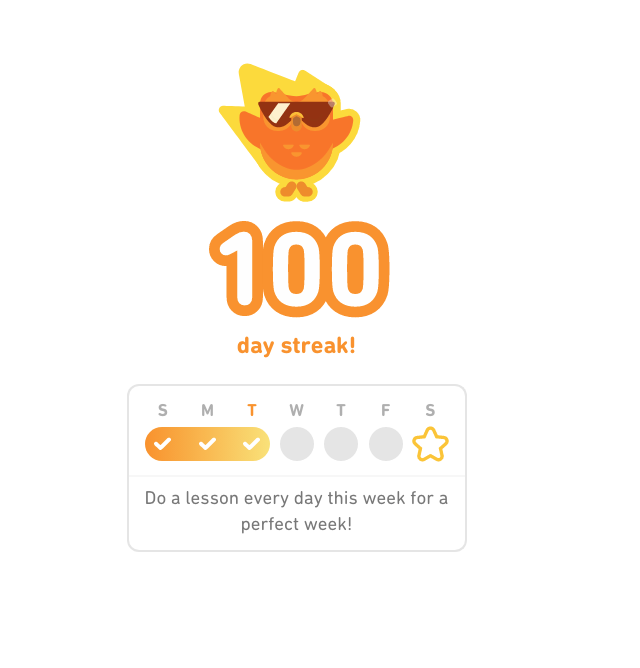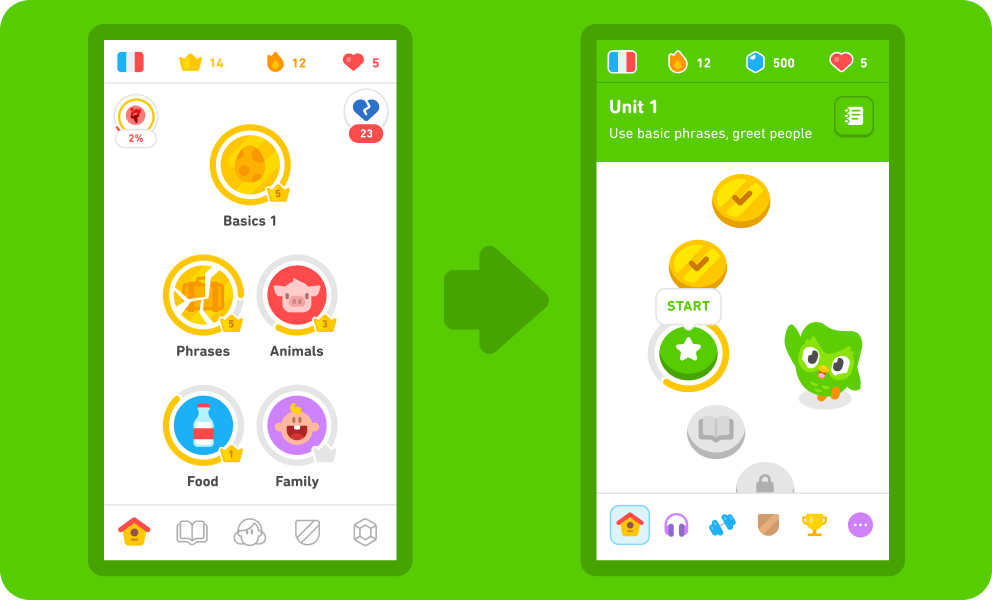Learning a foreign language is part of the recommended subject list for the EBacc and is a skill looked upon favourably by universities and workplaces because it takes dedication and commitment to learn a foreign language and demonstrates a student’s willingness to long-term learning commitments.
Learning a foreign language is definitely beneficial to students but language learning isn’t always easy; and if learning a language is hard, teaching one is harder.. especially if you’re not fluent in the language yourself.
Thankfully, there are lots of resources that make it easier to add language learning into a home-ed curriculum, even if you’re not a natural linguist yourself.
Teach and Learn a Language at Home
To achieve fluency, language learners must understand and be able to use,
- the academic aspects of the language enough to communicate in different mediums (reading, writing, speaking)
- cultural references that influence language usage (i.e how to address people, business etiquette)
- common-practice usage of terms/phrases/nouns (informal language usage)
We’re taking a combination approach to lessons:
- teacher-led ‘lesson style’ learning – to allow pupils to ask questions or focus on problem areas (lots of homeschoolers use language tutors – Preply is a great platform to connect with tutors)
- active listening exercises (podcasts/audiobooks/radio)
- and textbooks our homeschooler’s use to study from and use as a reference book for grammar rules and unit-specific vocabulary.
AI programmes are changing the landscape of education all the time and there are some that look great for language learning. This school year, we plan to trial different AI language teaching apps to see if they really are effective teachers – starting with TalkPal.
Improving Fluency
The more immersion into a language you can offer students, the greater their chance of achieving fluency. Including immersive language learning opportunities in the homeschool day is a simple way to do this. Just 10 minutes a day can make a world of difference.
- Read! Reading is a great tool to passively improve fluency. Not only are students exposed to new vocabulary; the different cultural usage of the language often makes a little more sense in story/news/article form because it’s given a context.
- Subtitles are excellent passive learning tools. Reading subtitles helps improve spelling and helps with language comprehension. Rewatch favourite movies and tv shows with subtitles in the target language or/and watch in the foreign language with English subtitles.
- Listen to music and radio. We passively absorb more than we realise. Having the language filtering into the background can help improve accent and fluency. Spotify is our go-to source of music & podcasts.
- Try and include the new language in daily life – use only that language at lunch one day a week or to talk about certain activities (eg. I will take a shower becomes Je prendrai une douche).
- Ask students to use the language they’re learning outside of the course environment.
Letter writing is an excellent way to practice writing in any language. Set the letter topic based on the vocab the student’s last language course unit covered; if you don’t speak the language and so cannot ‘reply’, extend the activity by asking them to reply to their own letter!
(We haven’t used any online sites to find penpals for our homeschoolers so can’t recommend any, but there are many ways to find language exchange penpals, from Facebook groups to websites dedicated to connecting language learners. A foreign language penpal would be a great option for homeschooled learners)
Translating texts is a tool that makes language learning fun and reminds learners of why they are studying! Reminding home-educated children of the purpose of lessons helps keep them intrinsically motivated to learn.
Online Courses for Language Learning
Online language courses are a great addition to a homeschool curriculum and there are options to suit every budget.
Duolingo
We love Duolingo! Duolingo allows you to explore new languages in a no-pressure environment. Our homeschoolers love seeing the days add up on a language-learning streak…

..such a simple idea that adds an element of play into language lessons. It encourage the student to complete a lesson a day and with language learning, consistency leads to fluency. Anything that makes learning fun is a plus and this self-competitive element of Duolingo’s language learning app makes it a fun screen-time activity, as well as being fun ‘school’.
Whichever language your homeschooler is learning, the fact that the Duolingo English Proficiency Test is accepted at over 3000 universities as an equivalent to IELTS is reassuring that the quality of ‘teaching’ the site/app provides is high, and proves that the programme itself is an effective style of learning.

Duolingo guides students through a language, gradually adding in grammar as they progress. It’s easy to navigate, the playful design acts as an incentive to learners to move along the learning path and uses placement tests to ensure learners are studying at the right level to succeed.
Duolingo is FREE and you can study as many languages as you like – making it a great budget-friendly option for homeschooling. As an app, it’s a handy lesson to complete on the go.
Rosetta Stone
The original language learning programme has been digitalised, offering web and app versions to replace the tapes and CDs most of us parents will have been familiar with. Rosetta Stone is a proven language programme that’s been consistently teaching students for 30 years, updated with the latest ed-tech advances to provide a complete curriculum that is second to none. If you want a complete programme and have some money to spend, this is a great language learning curriculum for homeschooled students.

Each Rosetta Stone course guides students systematically through lessons, ensuring they practice grammar and vocab, but putting speaking at the forefront of the curriculum. The app corrects pronunciation and accent making it easy to overcome any of the confidence-related hurdles so often met by students of a foreign language.
The lifetime access package is great for home educators as a one-off purchase that can be reused by multiple students.
Another fantastic resource for language learning is the Coffee Break Languages podcast. Coffee Break Language podcasts have an accompanying curriculum, which could be used to complete a homeschool language curriculum and the podcasts can be used as stand-alone classroom resources. Podcasts are great resources to use as active listening language lessons and these are good ones.
The language lessons in the podcast progress from absolute beginner to advanced, are easy to follow; logically progress through realistic conversations, and are structured to allow the listener to join in by repeating back phrases and vocabulary.
For students learning French as a foreign language, Illini is a great additional resource. It introduces French culture, is structured to help students improve their French vocabulary and there are worksheets and online exercises for learners to complete.
Likewise, the Goethe Institute has a plethora of resource links for students studying German.
We like the CGP textbooks for language learning but languages don’t need the latest edition of the textbook to teach what students need to know: Foreign language textbooks can be found cheaply and abundantly on eBay etc.
A good dictionary is important when studying a language. The formats of dictionaries vary so it’s a good idea to flick through in a bookshop before buying to see which dictionary format appeals most to the learner who will be using it.
Worksheets and games
Find worksheets online to supplement language learning. Spend a few hours every couple of months downloading and filing worksheets to match the units your homeschooler will cover and occasionally offer these as an alternative language lesson or as extension activities tagged onto another language course class.
- Live Worksheets is a useful site to create language worksheets yourself, with access to lots of worksheets created by others. The worksheets are online worksheets which you can assign to pupils either on the site or via Google Classroom.
A lot of Live Worksheets’ ready resources can be downloaded as PDFs and used as offline lesson material; any documents you create yourself can be downloaded. There are a mix of fun and textbook-style worksheets, allowing you to find a worksheet style that best appeals to your home learner.
- Teachit is a brilliant website for resources across all subjects. All teaching materials are created by teachers and intended for teachers which allows you to trust in the lesson material; this is especially useful if your homeschooler is learning a foreign language you don’t speak.
- To Teach is a new AI worksheet generator that makes creating personalised foreign language worksheets seem easy. It’s a new site we’re just starting to use but so far, it looks really useful.
Word games translate into other languages and keep the fun in learning – even board games like Scrabble can be played (with a dictionary) in a foreign language. Games like Wordle or Wordoku would be fun to use as language games.

